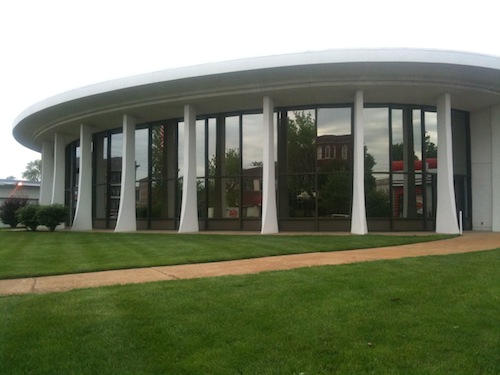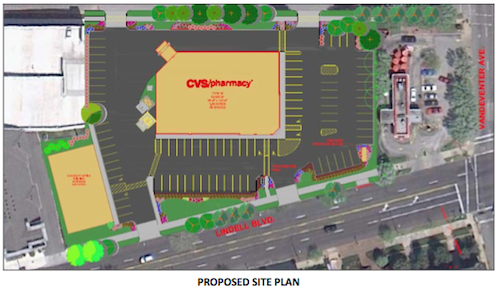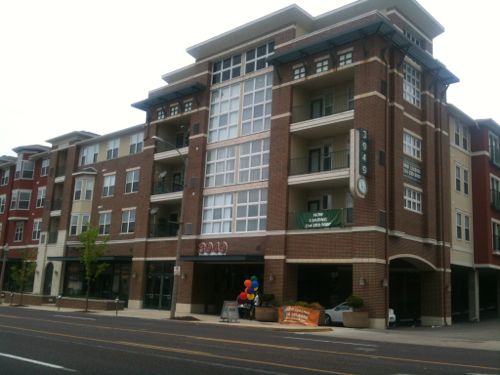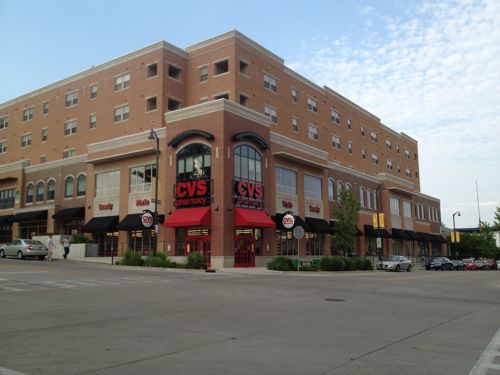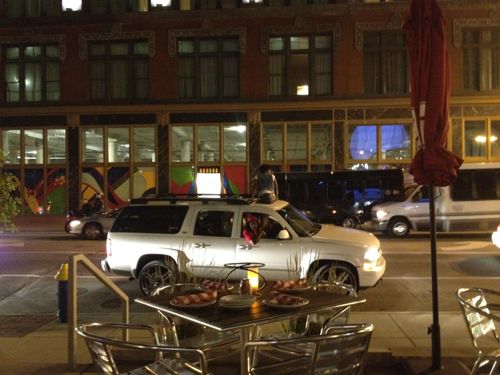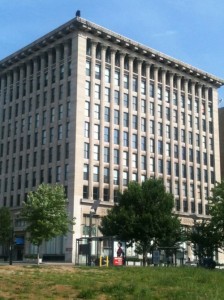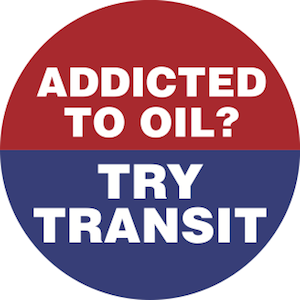So Long Ruth Porter Mall
Tearing down a mall? What stores did it have? No, not that kind of mall. A pedestrian mall.
Ruth Porter Park (officially named Ruth Porter Mall), is a linear park spanning nine blocks north from Delmar Blvd. to Etzel Ave., and one block west from Debaliviere to Goodfellow Ave. (source)
Most pedestrian malls were created by closing off a roadway but Ruth Porter Mall was created by razing buildings along a linear path. A 1971 aerial on historicaerials.com shows the clearing of buildings present in a 1958 aerial. By the time I first walked it in the 1990s it was looking very tired. View in Google Maps here.
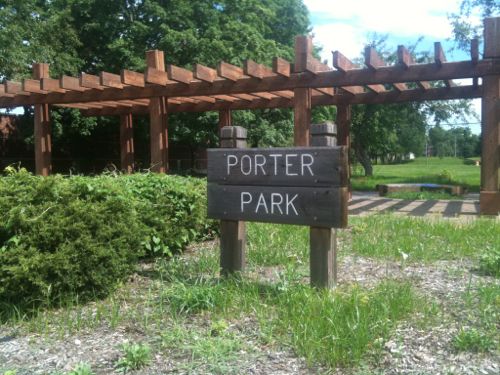
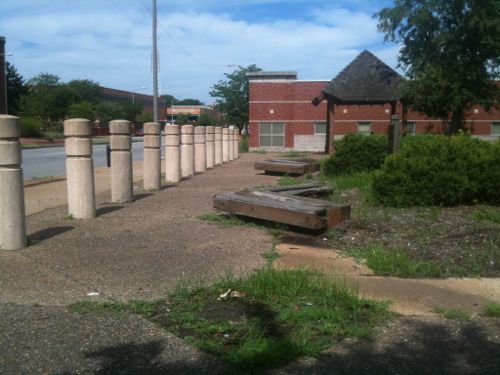
Who was Ruth Porter anyway? She was an African-American born in 1915 who died just 52 years later in 1967:
Ruth Porter was a founder and first executive secretary of the Greater St. Louis Committee for Freedom of Residence, a group organized in 1961 to break down housing restrictions and integrate housing in St. Louis. In 1958, she won an award from the National Conference for Christians and Jews for promoting racial understanding. She was named outstanding woman of the year in 1965 by the NAACP. Her tireless efforts to secure fair housing eventually led to the landmark U.S. Supreme Court decision in the Jones vs. Mayer case, which was won by residents she helped to support.
At one time Porter was also director of the Kinloch YMCA and a leader in the West End Community Conference. The Ruth Porter Mall at Delmar Boulevard and DeBaliviere Avenue is named in her honor. (Source)
The Supreme Court decision came a year after her passing.
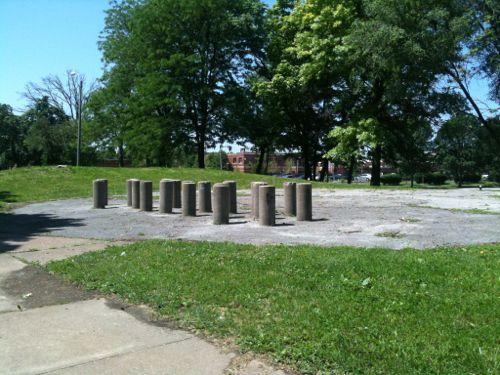
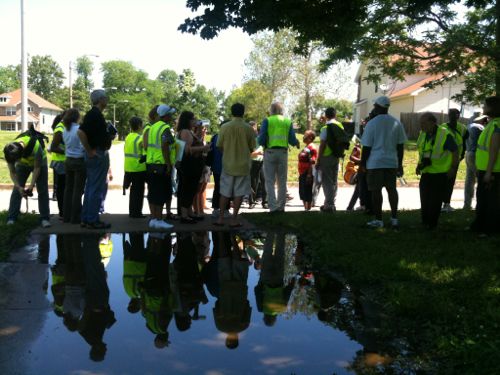
So what will become of the space? It’ll be incorporated into a larger trail network:
St. Vincent Greenway will extend for more than seven miles from NorthPark, near I-70 and Hanley Road, to Forest Park. The greenway route includes the completed sections through University of Missouri-St. Louis campus and the adjoining St. Vincent (County) Park.
The primary trail will continue to the Rock Road MetroLink station area, the MET Center in Wellston, and the West End and Skinker-DeBaliviere neighborhoods. The greenway will follow Engelholm Creek as much as possible.
The remainder of the primary greenway trail from the North Hanley MetroLink station to Forest Park is being designed.
The next segment slated for construction lies within the City of St. Louis. Construction through Porter Park (Ruth Porter Mall), and along Etzel Avenue from the park west to Skinker, will begin in October. Finishing touches will be applied in the spring.
At Forest Park, St. Vincent Greenway eventually will connect to other greenways, such as Centennial, Chouteau, and River des Peres. In the NorthPark business development, the greenway will meet the Maline Creek Greenway now being planned. (Great Rivers Greenway)
That’s a nice connection.
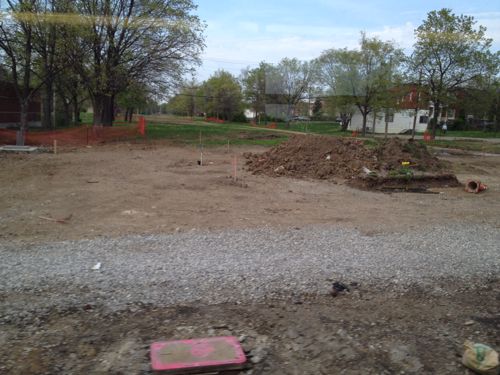
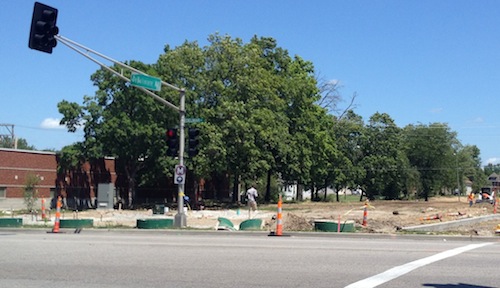
More from Great Rivers Greenway’s website:
This extension of the St. Vincent Greenway will change the usage of public right-of-way along Etzel Avenue from Skinker Boulevard eastward to Porter Park, allowing a physical separation of the greenway route from vehicles. The existing sidewalk in Porter Park will be re-surfaced as a trail. Both segments will contain many delightful upgrades and surprises.
When the Loop Trolley is constructed, the greenway will continue within the eastern half of the right-of-way of DeBaliviere Avenue south to Forest Park. (source)
The Ruth Porter Mall wasn’t accesible at all. It was built pre-ADA and it was never retrofitted with wheelchair ramps. I’m glad to see it change and become part of something bigger but I hope Ruth Porter is somehow remembered.
— Steve Patterson
